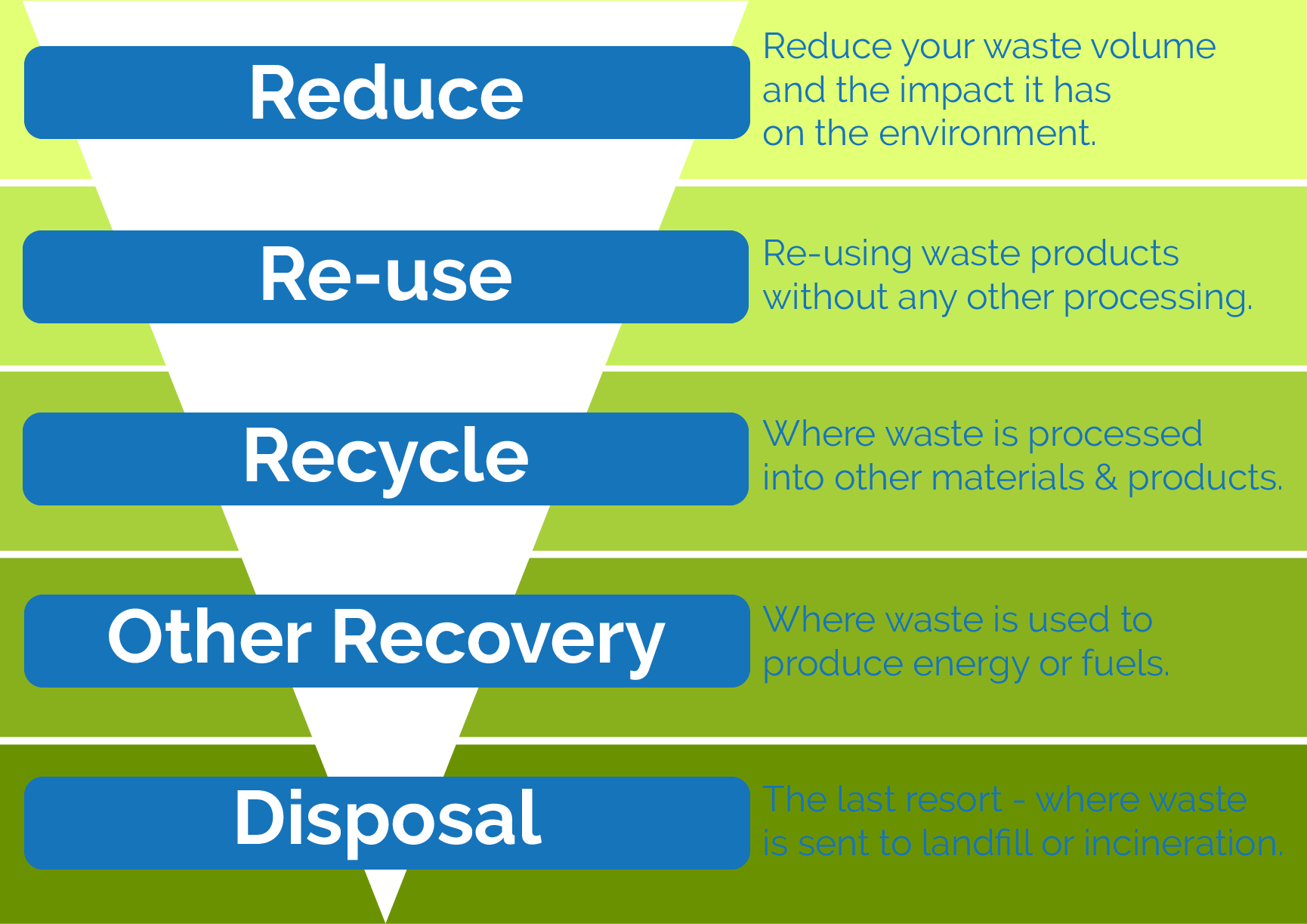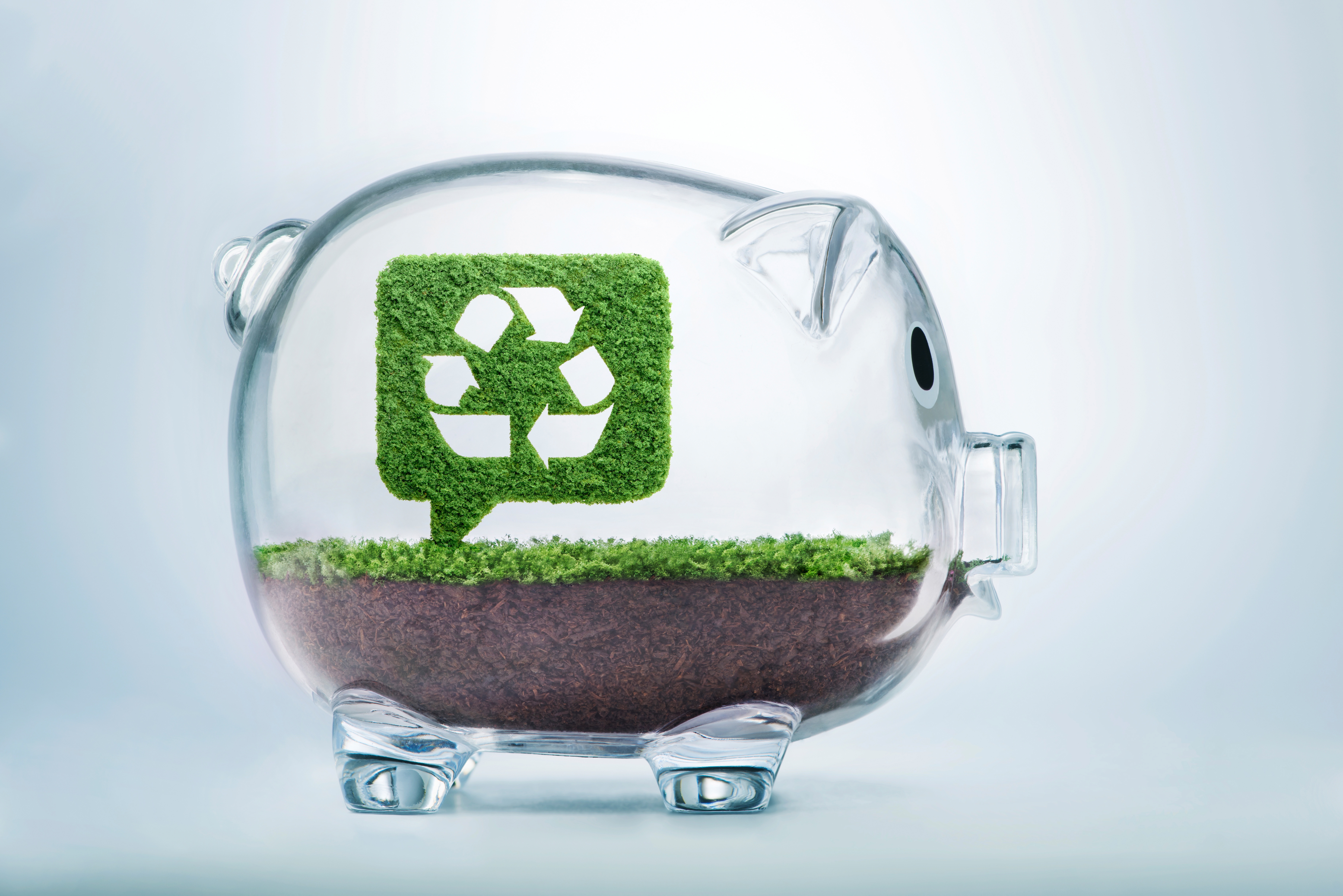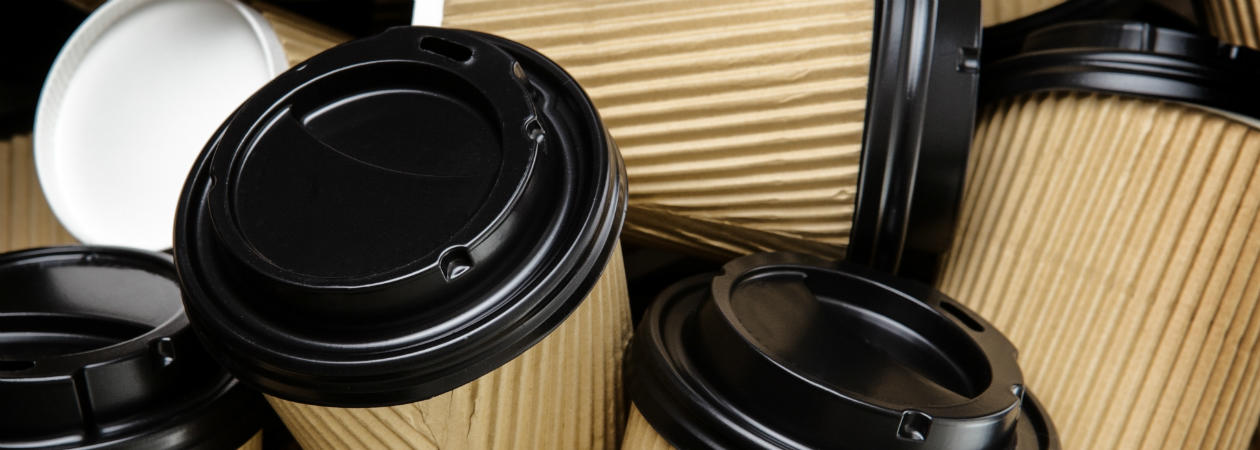
First of all, what is Zero Waste?
Many people have the perception that zero waste is pretty much impossible, and this perception stems from a wrong idea of what zero waste actually is. Zero waste does not simply mean that 100% of all waste is recycled. The ultimate definition is that nothing is sent to landfill – that everything is in some way contributing to a circular economy. Which means that zero waste actually is possible; certainly not easy, but not as far-fetched as many people assume.
In this post, we’ll walk you through 5 steps to get you well on the way to zero waste.
#1: Don’t forget about paper!
Since Blue Planet II, plastic waste has been on everyone’s mind, but the biggest volume of waste produced by the average office by far, is paper (60 – 80%!!) And it’s probably the waste which can most easily be eliminated, or at least dramatically reduced. Consider these ideas for reducing your paper waste.
- Think before you print – this is the digital age! How much do we really need to print these days? Start by just analysing how much of what you print could be digital, but consider changing your processes and operations to be more digital.
- Consider ‘pull printing’ or ‘follow-me printing’. A whopping 30% of printing is never collected from the printer. Setting up pull printing means that all users have to log in at the printer to access their printing – in other words it will only print when they come to collect it.
#2: Utilise the Hierarchy of waste

As we mentioned earlier, zero waste doesn’t mean 100% recycled. You should deal with your waste in the order shown on the hierarchy; start by reducing waste, and, as a last resort, send it to landfill.
First of all, reduce and reuse
We’ve already talked about how you can reduce paper waste, so here’s some tips on reducing plastic waste:

- Remove plastic straws from your office
- Ban disposable cutlery and plates
- Cut down on single-use food packaging
- Switch to re-usable drinks bottles and coffee cups
- Work with your suppliers to decrease product packaging
- Analyse your own processes to see how you could decrease packaging
Then recycle
This is the bit everyone concentrates on. If you’re struggling, we’ve got some great tips in this blog post to help you boost your recycling rates.
Next up…recovery
This is the bit that many businesses give little thought to, but it’s what bridges the gap between good recycling rates and zero waste. Because even if it can’t be recycled, it can still be contributing to a circular economy.
The most common form of recovery is energy from waste (EfW), where waste is used to create a sustainable form of energy. Other forms of recovery include composting, biomass, anaerobic digestion and creating wood pellets for fuel.
Speak to your waste management company to see what they can do for you – many companies today will offer EfW for all your non-recycled waste.

#3: Set up an effective bin system
We would say this, but seriously, setting up an effective recycling station can make all the difference. We wrote a whole blog post on this, but here’s a few really quick tips to give you some pointers.
- Clear labelling – make sure it’s crystal clear what can go in each bin.
- Make sure there’s enough of them – make sure that it’s just as easy for your staff to correctly recycle waste as it is to just put it in general waste.
- Remove personal bins – having bins under every desk makes it too tempting to just put all waste in one bin. Remember, the goal is to make recycling as easy as single-stream waste disposal; which may have to mean making it harder not to recycle!
.jpg)
#4: Educate your staff
Recycling is complicated! The UK’s recycling system is complex and disjointed – a recent study by WRAP found that UK councils run 39 different waste collection schemes, and that’s just councils. Each waste management company also uses its own system, and has its own different rules as to what can and can’t be recycled.
It’s vital that all staff know exactly what they can and can’t recycle at work for several reasons; firstly if your waste streams are contaminated then they can’t be recycled, but also if you’re staff fully understand the recycling process at your office, then they’re far more likely to be bought into it in a fuller way, and be more committed to your goal of zero waste. Here are a few ideas to help you get full buy-in from all your staff.
- Run a waste awareness day/programme. The key to ensuring staff know what they can recycle is to enable them to fully understand the process; don’t just tell them what, tell them why. Some waste management companies today will actually run an event at your workplace, giving staff in insight into the process behind their waste management.
- Create clear signage. Make your bin system completely fool-proof with clear signs and graphics showing exactly what goes in each bin. This way, anyone who uses the bin can tell at a glance where to put their waste.
#5: Consider specialised recycling
A lot of waste streams, especially different types of plastics, are recyclable, but most companies don’t recycle them as it is not commercially viable. However, if your company produces a lot of a certain amount of waste, then getting specialised recycling for just that one stream may be worth considering.
Some waste streams to consider could be plastic packaging (e.g. polystyrene), wood, or electrical equipment. You could also consider setting up a specific waste stream for waste that would usually go in mixed recycling, such as glass. These specific streams will not only have a higher value per tonne, they will also have a greater value to the circular economy.
One stream that almost every office can consider is single-use coffee cups. All offices get through a huge amount of these each day, and usually they’re all thrown into landfill. Speak to your waste manager to see what they can do for you.

Have you noticed a theme here? Several times throughout this post, we’ve mentioned collaborating with your waste management company, and that is vital to achieving your zero waste goal. You could really break this whole post into two steps: number 1, get your reduction, re-use and recycling as good as you can; number 2, collaborate with your waste broker to take it to the next level.
So to get back to our original question; how hard is zero waste to achieve? Well, ultimately it’s up to you to decide how it could work in your organisation, but our belief is that it’s not as hard as people commonly perceive it to be. Every organisation is different, and obviously it’s going to be more commercially viable for a larger organisation, but everyone has to start somewhere, and even the smallest of teams can make some simple steps to get started on the zero waste journey.
